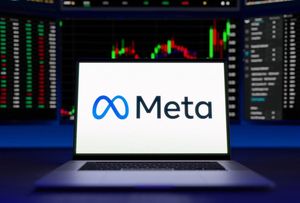- Retirement Account Balances Down from Last Quarter; Double Digit 401(k) Increase from Q3 2022
- Gen Z Investors Make Huge Strides with IRA Accounts
- Growing Presence of Managed Accounts Help Retirement Savers Stay on Track
According to the latest data from Fidelity Investments®’ Q3 2023 retirement analysis, account balances have decreased slightly since last quarter, while withdrawals and loans are inching up, showing the impact economic events such as inflation and market volatility can have on Americans‘ wallets—and ultimately their retirement savings. Encouragingly, retirement savings behaviors remain strong and many employers are coming together to find ways to tackle the problem of unexpected expenses, which can derail budgets, short-term financial goals, and even saving for retirement.
As one of the country’s leading workplace benefits providers1 and America’s No. 1 IRA provider2, Fidelity’s quarterly analysis of savings behaviors and account balances for more than 45 million IRA, 401(k), and 403(b) retirement accounts shows many silver linings: retirement balances are up over a year ago, young investors are making great strides with the long-term, and savings rates remain steady and strong this quarter. But juggling the short-term has become a persistent problem, as Fidelity research shows 8-in-10 Americans say inflation and the cost-of-living are causing stress, with most U.S. adults (57%) unable to afford even a $1,000 emergency expense.
“Americans have become accustomed to riding the economic waves of the past several years, and this quarter is no different,” said Kevin Barry, president of Workplace Investing at Fidelity Investments. “They are learning how to stay afloat in very challenging financial conditions - including having enough money set aside should an emergency arise. Through it all, we are pleased to see retirement savers continue to stay the course with steady savings rates and continued commitment to their futures.”
Highlights from Fidelity’s Q3 2023 analysis include:
- Average retirement account balances decreased slightly from the previous quarter, but 401(k) balances are up double digits over the long term and from one year ago. The average IRA balance3 was $109,600 in Q3 2023, a decrease of 4% from last quarter, but an 8% increase from a year ago and 28% increase from 10 years ago. The average 401(k) balance4 decreased to $107,700, down 4% from Q2 2023, but an 11% increase from a year ago and 27% increase from 10 years ago. For 403(b)s, the average account balance5 decreased to $97,200, down 5% from last quarter, but up 11% from last year, and a 46% increase from 10 years ago.
Average Retirement Account Balances
|
Q3 2023 |
Q2 2023 |
Q3 2022 |
Q3 2018 |
Q3 2013 |
IRA |
$109,600 |
$113,800 |
$101,900 |
$111,800 |
$85,300 |
401(k) |
$107,700 |
$112,400 |
$97,200 |
$106,500 |
$84,600 |
403(b) |
$97,200 |
$102,400 |
$87,400 |
$87,500 |
$66,700 |
- Total 401(k) and 403(b) savings rates remain steady. The total savings rate for the third quarter, reflecting a combination of employee and employer 401(k) contributions was 13.9%, consistent with Q2 and up slightly from a year ago. The savings rate remains just below Fidelity's suggested savings rate of 15% (including both employee and employer contributions). Boomers in the workforce continue to save at the highest levels (16.7%).
- Continued growth in IRA accounts, particularly for Gen Z6 investors. The total number of IRA accounts rose to 14.6 million, an 11% leap over this time last year (Q3 2022). Total assets also increased 19% in the last year. Gen Z investors continue to make huge strides with retirement savings, with a 63% increase in IRA accounts year-over-year and overall dollar contributions increasing 51%. The third quarter also saw a 69% increase for females in this age bracket. Across generations, Roth IRAs continue to be the preferred retail retirement savings vehicle, with 61.2% of all IRA contributions going to Roth.
- Average long-term balances for 5, 10 and 15 year continuous savers dropped this quarter, but increased from a year ago. The balance for Gen Z workers who have been in their 401(k) plan for 5 years straight, however, reached $29,100 in Q3, showing the power of staying in the same plan, with the same employer, for an extended period of time.
“It’s impressive to see Gen Z entering the workforce and prioritizing retirement savings,” said Rita Assaf, head of Retirement Products. “While market conditions are constantly changing, the benefit of making consistent contributions over the long-run is clear—a more secure retirement.”
Spotlight Series: Breaking Down Withdrawals vs. Loans
One potential cloud on the horizon: despite consistent contribution levels, many individuals increasingly have been tapping their retirement savings through in-service withdrawals, hardship withdrawals, or loans.
The increasing use of hardship withdrawals and loans underscore the need to help retirement savers develop emergency savings, which Fidelity has found to be the No. 1 savings goal among employees, after retirement. 7 To help ease this burden for employees, many leading employers are working with Fidelity to add workplace emergency savings programs to their growing roster of financial wellness benefits.
- Hardship withdrawals: In Q3, 2.3% of workers took hardship withdrawal, up from 1.8% in Q3 2022. The top two reasons behind this uptick were avoiding foreclosure/eviction and medical expenses.
- 401(k) Loans: Inflation and cost of living pressures have resulted in increased loan activity over the last 18 months. In Q3, 2.8% of participants took a loan from their 401(k), which is flat from Q2 and up from 2.4% in Q3 2022. The percentage of workers with a loan outstanding has increased slightly to 17.6%, up from 17.2% last quarter and 16.8% in Q3 2022.
- In-service withdrawal: Depending on an employer’s plan guidelines, an individual may choose an in-service withdrawal rather than a loan if they prefer to assume taxes and penalties and not have to repay the amount they withdraw. In Q3, 3.2% of participants took an in-service withdrawal, up from 2.7% from a year ago.
Managed Accounts Helping Many Retirement Savers Stay on Track
Employers continue to explore plan features to help improve the retirement planning efforts of their workforce, especially during periods of market volatility. One feature growing in popularity: workplace managed accounts, an option for retirement savers looking for personalized, professional help to keep their investment strategy aligned with their retirement goals. In fact, Fidelity’s workplace managed account offering – Personalized Planning & Advice – has just reached a major milestone, celebrating 20 years helping individuals create a holistic retirement savings plan. Among the many reasons to celebrate this anniversary:
- A 60% increase in the percentage of plans offering a workplace managed account in the last five years alone.
- More than 10,000 plans on Fidelity’s platform offer a workplace managed account.
- 80% of participants enrolled in a Fidelity managed account are on track to cover retirement expenses8.
- 93% of participants enrolled in a managed account have stayed actively engaged in retirement planning.9
For additional information on Fidelity’s Q3 2023 analysis, as well as a deeper dive into withdrawals versus 401(k) loans, click here to access Fidelity’s “Building Financial Futures,” which provides additional details and insight on retirement trends and data. In addition, Fidelity also offers a variety of other resources to learn more about retirement planning, including helpful Viewpoints articles such as “How to take control of your retirement” and a new site dedicated to engaging the next generation of investors.
About Fidelity Investments
Fidelity’s mission is to strengthen the financial well-being of our customers and deliver better outcomes for the clients and businesses we serve. With assets under administration of $11.5 trillion, including discretionary assets of $4.4 trillion as of September 30, 2023, we focus on meeting the unique needs of a diverse set of customers. Privately held for 77 years, Fidelity employs more than 73,000 associates who are focused on the long-term success of our customers. For more information about Fidelity Investments, visit https://www.fidelity.com/about-fidelity/our-company.
Keep in mind that investing involves risk. The value of your investment will fluctuate over time, and you may gain or lose money.
Past performance is no guarantee of future results.
Views expressed are of the date indicated, based on the information available at that time, and may change based on market or other conditions. Fidelity does not assume any duty to update any of the information.
Fidelity® Personalized Planning & Advice at Work is a service of Fidelity Personal and Workplace Advisors LLC and Strategic Advisers LLC. Both are registered investment advisers, are Fidelity Investments companies and may be referred to as "Fidelity," "we," or "our" within. For more information, refer to the Terms and Conditions of the Program. When used herein, Fidelity Personalized Planning & Advice refers exclusively to Fidelity Personalized Planning & Advice at Work. This service provides advisory services for a fee.
Fidelity Brokerage Services LLC, Member NYSE, SIPC
900 Salem Street, Smithfield, RI 02917
Fidelity Distributors Company LLC,
500 Salem Street, Smithfield, RI 02917
National Financial Services LLC, Member NYSE, SIPC,
245 Summer Street, Boston, MA 02110
1118779.1.1
© 2023 FMR LLC. All rights reserved
__________________________
1 Based on PLANSPONSOR Magazine's “2023 Recordkeeping Survey,” June 2023 and “Plan Administration Guide, Part 1” which offers insight into the provider marketplace for defined benefit (DB), stock plan and health savings account (HSA) administration, May 2018.
2 Based on Cerulli Associates’ Top-10 IRA Providers by AUA, 2Q 2020–2Q 2022.
3 Fidelity business analysis of 14.6 million IRA accounts as of September 30, 2023.
4 Fidelity Investments Q3 2023 401(k) data based on 25,300 corporate defined contribution plans and 22.9 million participants as of September 30, 2023. These figures include the advisor-sold market but exclude the tax-exempt market. Excluded from the behavioral statistics are non-qualified defined contribution plans and plans for Fidelity’s own employees.
5 Fidelity Investments Q2 403(b) data based on 10,165 Tax-exempt plans and 8.3 million plan participants as of September 30, 2023. Considers average balance across all active plans for 6.16 million unique individuals employed in tax-exempt market.
6 Generations as defined by Pew Research: Gen Z (born 1997-2012), Millennials (1981-1996), Gen X (1965-1980) and Boomers (1946-1964).
7 Fidelity’s Financial Wellness Checkup of 392,000 active workplace participants from January 1, 2023 to August 31, 2023.
8 Cohort data includes all participants who had been enrolled in Personalized Planning & Advice for 8+ years as of December 31, 2021. Assessment based on Fidelity’s RPM (Retirement Preparedness Measurement) score, which represents the percentage of a participant’s retirement expenses that are on track to be covered in poor market conditions. RPM considers an individual’s contributions, portfolio asset mix, retirement time horizon, and expected retirement expenses.
9 Fidelity analysis as of September 30, 2023. Engagement is measured for both active and terminated enrolled participants in corporate DC and TEM plans with a positive balance over a period of the last 12 months.
View source version on businesswire.com: https://www.businesswire.com/news/home/20231120555184/en/
Contacts
Contact for Media Only:
Corporate Communications
FidelityMediaRelations@fmr.com
Kristen Andrews
(617) 563-2932
kristen.andrews@fmr.com
Follow us on Twitter @FidelityNews
Visit About Fidelity and our online newsroom
Subscribe to emailed news from Fidelity






